In a number of dark nights in 1843, French adventurer Émile Prisse d’Avennes entered the Room of Ancestors located at the southwest corner of the Akhmenou (Festival Hall of Thutmosis III), in Karnak stealthily to dismantle sandstone blocks of the three-wall room, which contains Karnak King List. He packed them in huge wooden boxes sailing on the Nile from Luxor to Paris.
Displayed first at the Cabinet des Medallles, then it joined the Louvre collections in 1919.
Since then, we had never seen the list again.
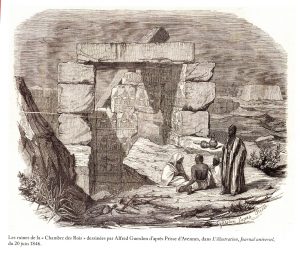
Karnak King List, also known as Karnak Canon, is one of main sources to understand the ancient Egyptian history, which early historians and Egyptologists depended on their study of the order of ancient Egyptian kings.
At the time of its robbery, there were no agreements preserving the antiquities. It was normal for rulers to exchange monuments as gifts. Mohamed Ali Pasha (1805-1848), for example, granted the Luxor Obelisk to Napoleon Bonaparte which was transported to Paris in 1830.
In the 1970s, the Centre Franco-Égyptien d’Étude des Temples de Karnak designed a replica for the compartment and the lost list.
They built the sandstone compartment and placed on it the list in gypsum. By time, the inscription of the list decayed. A new list is therefore needed.
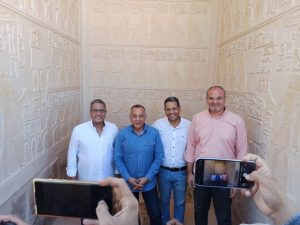
On 17 October, Supreme Council of Antiquities Secretary General Mostafa Waziry inaugurated the reinstallation of the replica of this important list.
“Once it was installed, the visitors were so happy when they saw it. Foreigners came to Luxor especially to see it,” Waziry said.
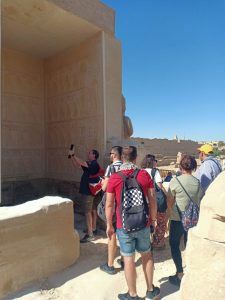
The Room of Ancestors was built around 1445 BC by Thutmose III inside the Akhmenu which had become the main sanctuary of the Amun temple at Karnak.
Thutmose III, or Thutmose the Great, was the sixth pharaoh of the 18th Dynasty (1479 BC-1425 BC). During his first 22 years of his reign, he was coregent with Hatshepsut, his stepmother and aunt, who was named pharaoh.
He served as the head of Hatshepsut’s armies. During the final years of his rule, he appointed his son and successor, Amenhotep II, as his junior co-regent.
He made the list containing 61 cartouches of kings starting from Sneferu, founder of the 4th Dynasty during the Old Kingdom until Thutmose III. It contains a large number of Second Intermediate Period kings that are not found in the other monumental king lists.
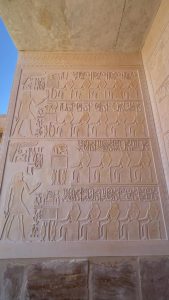
“The list was known to Jean François Champollion who copied part of it, then the record was then completed by James Burton in 1825. Other scholars made their own copies as interest of historians and the public in the ancient Egyptian civilisation after the deciphering of the Rosetta Stone,” Mostafa Al-Saghir, director-general of Karnak Antiquities and the Avenue of Sphinxes, told The Egyptian Gazette.
The list begins with pharaohs of the Old Kingdom though no archaeological remains of this era have ever been discovered on the site.
The oldest and earliest monument found in Karnak temples is a small, eight-sided column from the Eleventh Dynasty (c. 2150 BC–c. 1991 BC).
“The Karnak King List contains pharaohs from the previous dynasties that did nothing in Karnak, as there was a widespread cult in Egypt which is worshipping the ancestors. Many kings were sanctified and people presented offerings to them,” Al-Shaghir said.
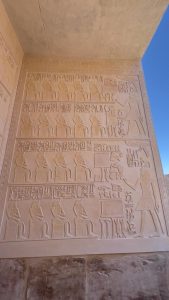
So, he added, Thutmose III made this room dedicated to the kings list. It shows scenes of kings while seated and above them their names.
Thutmose III appears in the inscriptions while presenting offerings to 61 names of Egyptian kings.
Al-Saghir said that in making this replica for the list, they preferred to use technology.
“We contacted the Louvre Museum, which made an RMN 3D photogrammetric model and it was carried out by the Egyptian company Konouz, affiliated to the tourism and antiquities ministry, in three months,” he said.
Established in 2020, Konouz is the first company in Egypt and the Middle East that is specialised in producing and replicating the historical Egyptian antiquities, in cooperation with the Ministry of Tourism and Antiquities.
Among the mentioned kings are Sahure, the second ruler of the Fifth Dynasty (c. 2465 – c. 2325 BC), who ruled for about 13 years in the early 25th century BC during the Old Kingdom. His pyramid is located in Abusir. Amenemhat I, first king of the Twelfth Dynasty of the Middle Kingdom, Amenemhat II, third pharaoh of the 12th Dynasty.
Senusret I, second pharaoh of the Twelfth Dynasty who ruled from 1971 BC to 1926 BC and Senusret III, fifth king of the Twelfth Dynasty of the Middle Kingdom, his pyramid complex was built north-east of the Red Pyramid of Dahshur.
Queen Hatshepsut, who was Thutmose III’s predecessor, was not mentioned, as he erased many of her monuments shortly after his accession.



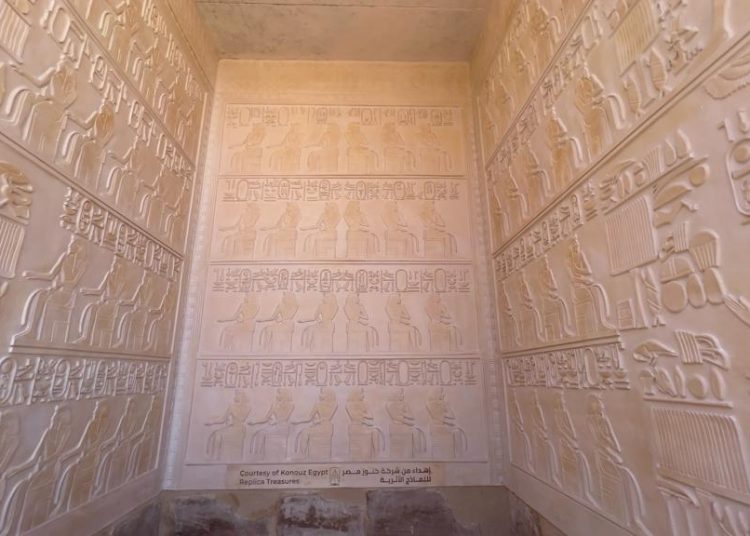


Discussion about this post